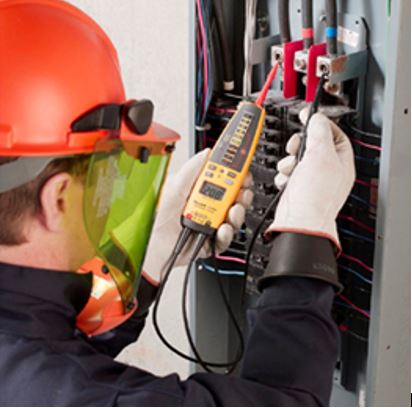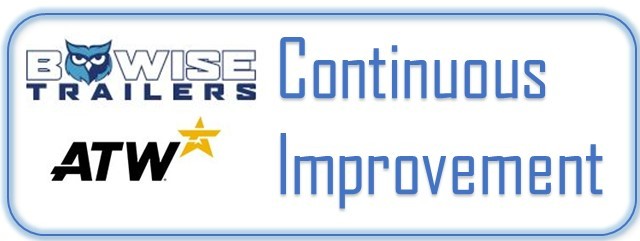Information
-
Audited Department
-
Audited Month
-
Auditors Names
-
Conducted on
-
Instructions:
1. Preparation - make sure you have your own PPE on including safety shoes, safety glasses, and hearing protection.
2. Observe the area and employee(s). Find the team lead or safety committee member from the department, for their participation. Indicate conformance or non-conformance by check yes, no or NA. Every "no" response should have a note, picture, and maintenance work order if necessary.
4. Greet the employees and explain that you are working to complete a safety audit in the area and thank them for any feedback they can provide.
5. Review the hazard assessment and ensure that it is updated.
6. Record employee feedback and observations to be recorded in the notes.
7. Record nonconformances that you are unable to fix immediately. Record safety items that need assistance or maintenance.
8. Notify team lead, manager, or HR if you see an immediate safety hazard.
9. Thank the employees and team lead for their time and cooperation.
10. Add any additional inspection items or questions asked in the notes section. -
Guidance:
1. Fire Extinguisher Checl: How are they identified and inspected?
2. Eye wash - how eye wash stations are identified, are they clean, operating correctly, and free of foul smells?
3. Air Nozzles - pictures and why (30 psi limit) - health hazard of dead heading the nozzle.
4. SDS - can they show you how to find it? Check one chemical to make sure it is present.
5. Visual checks of machines for proper guarding and is guarding intact. Are there any pinch points?
6. Hoses - Check for splits, dried out hose, etc.
7. Straps fraying
8. Electrical panels - unblocked in front and can they get to it?
9. Tool use - hammers, improper tools, mushroomed stamp heads, etc.
10. Box cutters - retractable blade. Are there any left open?
11. Free standing racks - are they bolted down, overloaded, or have cross beams secured?
12. Hoist inspection tag is signed off on.
13. Safety Glasses - personal with side shields stamped with Z87?
14. Secondary containers - is the chemical identified and label legible?
15. Electrical issues - permanent extension cord, 3 prong plugs, or insulated wire, of GFCI.
16. Material handling equipment - inspected, license available, inspection sheet completed.
Personal Protective Equipment (PPE)
-
Are steel-toed safety shoes with metatarsal guards are being worn as required?<br>
-
Is eye protection (safety glasses/weld helmet/goggles) necessary for the job function being used as required?
-
Are ear plugs/muffs/OSHA Approved Ear Buds being used (excluding Depot)?
-
Is respiratory protection being used and stored as required?
Ergonomics
-
Is the area free from excessive lifting, awkward positions, excessive overhead reach and excessive bending and twisting?<br>
Housekeeping
-
Are carts and bins free from being overloaded?
-
Is emergency equipment (fire extinguishers, eye wash stations and spill stations) accessible, have signage, functioning, up to date on inspections, and ready for immediate use?
-
Are the eye wash stations functioning and clean?
-
Is all material stored without overhanging the racks?
-
Are all trash cans and hoppers empty or beneath the top?
-
Is the area free from any trip hazards?
-
Is the area free from any spills or slick spots?
-
Is the area open without any congestion? <br>
-
Are all secondary containers labelled and legible?
-
Is the area free from any permanent extension cords?
-
Are all tools not in use stored properly?
-
Are insides and tops of flammable paint cabinets free from other flammable materials (paper, plastic, cardboard)?
Tools, equipment and machines
-
Are ladders and platforms free from damage, equal in riser height and not slippery?
-
Is the area free from any loose or frayed air lines and hoses?<br>
-
Are lifting straps in good condition (If no, turn in to Tool Crib for replacement)?
-
Are all guards are secure and without damage?
-
Do all machines have proper LOTO instructions?
-
Are electrical wiring and boxes free from any damage or issues?
-
Are all electrical boxes accessible (3 feet)?
-
Is all material handling equipment in good working order?
Forklift Operations
-
Is the forklift driver wearing their seatbelt?
-
Does the forklift drivers use their horn at intersections?
Questions for Employees
-
Do you know your rally point for for fires and inclement weather?
-
Do you know where the nearest emergency exit is?
-
Do you know where the nearest fire extinguisher is?
-
Do you know where the nearest eye wash station is?
-
Do you know where the SDS is and how to use it?
-
Are all of your tools in good working condition?
-
Do you have your forklift license and is it valid? (Show)
-
Do you know where to find the accident/near miss forms?
-
Does your E-stop work and has it been tested?
-
Do you know where the nearest pull station for evacuation is?
-
Do you know where the button for inclement weather is?
-
Do you know where the hazard assessment is and if it is updated?
-
Do you know where the closest spill control station is?
Questions for Auditors
-
Have notes been made for all questions answered with a "no" response? <br>
-
When necessary, have maintenance work orders been submitted?











